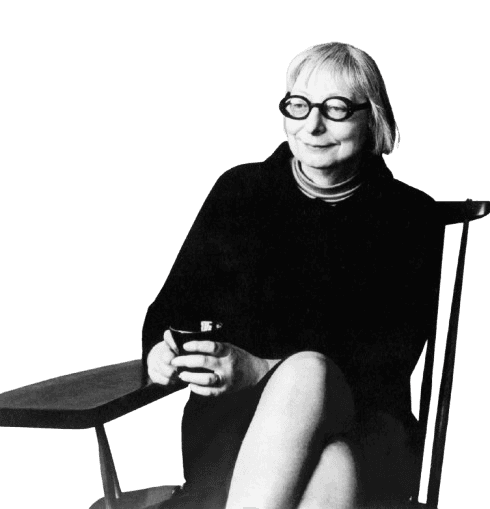Life and achievements
Early life
In a family that supported her curiosity, Jane Jacobs was born in 1916 in Scranton, Pennsylvania. Her father was a doctor, and her mother was a former teacher and nurse. Jacobs' childhood was characterized by her curiosity about the things happening around her. She left high school, and in 1935, she moved to New York City during the Great Depression and took up writing for trade magazines while also being a stenographer. Jacobs first discovered her passion for the city's diverse communities in New York; Greenwich Village was her residence.
Jacobs had a short stint at Columbia University's School of General Studies, where she majored in economics, law, and political science. Jacobs' formal education was not extensive; she never finished any degree but studied a wide range of subjects, which helped her develop a holistic view of cities and economies. Her experience as a journalist, which she started at a young age, enabled her to be an observer, a quality that would later be useful in critiquing urban planning. In the 1950s, Jacobs began writing for Architectural Forum magazine and became known for her skepticism towards the mainstream approaches to city planning.
Legacy
Jane Jacobs' role in the history of urban studies can be described as pioneering. Jacobs' book titled The Death and Life of Great American Cities is still among the most essential books in the field and has changed how planners, architects, and policymakers view the city. It is worth noting that Jacobs' ideas on mixed-use development, density, and the role of community participation in planning are still considered the pillars of urbanism. Her idea of 'eyes on the street' helped to create safer and more lively public spaces. At the same time, her criticisms of bureaucratic urban redevelopment projects remain relevant to current debates on gentrification.
Jacobs was an activist whose efforts significantly contributed to preserving historical neighborhoods from destructive redevelopment, especially in New York and Toronto. She led a generation of grassroots urban advocates and saved the character of areas such as Greenwich Village and Toronto's Annex district. Jacobs' impact was felt worldwide as she contributed to formulating the principles of New Urbanism, an organization that seeks to design pedestrian-friendly communities.
Furthermore, Jacobs's work in urban planning also made significant contributions to economic theory through her books, such as The Economy of Cities and Cities and the Wealth of Nations. These works discussed cities as generating growth and new ideas in the economy and overthrew the traditional concepts of the national economy. Jacobs was also a vocal supporter of policies benefiting neighborhoods rather than large-scale developers and corporations.
Milestone moments
May 4, 1916
Birth of a Visionary
Jane Jacobs was born in Scranton, Pennsylvania, in a family keen on education and intellectual work. Her father was a doctor, and her mother, a former teacher, encouraged Jacobs to be curious about life.
Jacobs was born and raised in Scranton and became interested in the social and economic organization of cities, which formed the basis of her work in urban studies.
She was raised in a town, and during her childhood, she was exposed to the interactions of the urban environment, which formed the basis of her later critiques of modern city planning.
In young adulthood, Jacobs relocated to New York City, where she started practicing journalism. The spirit of New York's districts, especially the Greenwich Village, inspired her and strengthened her vision of the city built by people.
These early experiences in her life provided the foundation for her later activism and her excellent work on urban society.
May 6, 1961
The Death and Life of Great American Cities is Published
In 1961, Jane Jacobs wrote The Death and Life of Great American Cities, which criticized modernist city planning.
The book was against large-scale urban renewal projects that emphasized the construction of highways and high-rise buildings rather than the needs of the communities.
Jacobs advocated the concept of cities as organisms, arguing for integrating neighborhoods, short blocks, and lively street frontages.
The appearance of The Death and Life of Great American Cities can be considered a turning point in urban studies.
It questioned the conventional planning paradigms of the time and paved the way for what is now known as people-oriented planning paradigms for cities.
Jacobs' ideas on the positive effects of diversity and density and the need to involve the public in the development of cities are still relevant to city planners, architects, and activists.
Jun 6, 1968
Move to Toronto
In 1968, Jacobs and her family moved to Toronto, Canada, partly to shield their sons from the Vietnam War draft.
In Toronto, Jacobs emerged as an opponent of urban expressways, especially the Spadina Expressway, which was to pass through several areas in downtown Toronto.
Through her activism, she put a stop to the project, and thus, the integrity of the city's community was maintained.
This began Jacobs' new life as an urban advocate in Toronto.
In the city she had taken up as her own, she remained an essential participant in discussions on the future of cities, especially in her disagreement with car-dominated urban planning.
Her work in Toronto laid the foundation for her as one of the leading voices in the struggle for people-oriented cities.
Apr 23, 1973
The Spadina Expressway Defeated
Jacobs was instrumental in the successful campaign to halt the construction of the Spadina Expressway in Toronto, which would have devastated several downtown neighborhoods.
Her leadership in the fight against the expressway inspired local people's protests and raised awareness of the negative impact of such projects on communities.
Jacobs and her supporters succeeded in winning the fight against the construction of the Spadina Expressway.
The victory showed how ordinary citizens can mobilize and bring about change in the policies that affect their environment.
It is considered the turning point in Toronto's urban development, contributing to its direction towards more people-oriented and sustainable city planning.
